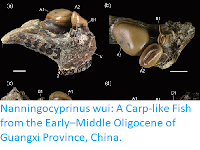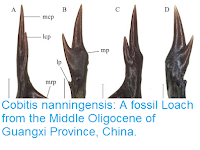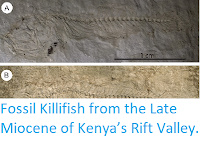African Annual Killifish are small Cyprinodont Fish found in ephemeral pools on the savannas of Africa. They spend most of their lives as diapausing embryos (embryos in a state of suspended development) buried in dry sediment, emerging when seasonal, but unpredictable, rains lead to the formation of small ponds, which can persist from a few weeks to several months. This has led to the Killifish developing an extremely rapid life-cycle, as they attempt to grow and reach sexual maturity before the pools disappear. One species, the Turquiose Killifish, Nothobranchius furzeri, has been shown in the lab to reach sexual maturity in as little as twenty days, but this is generally thought to be better than they can achieve in the wild, where conditions are likely to be more ideal than they are in the wild.
In a paper published in the journal Current Biology on 6 August 2018, Milan Vrtílek of the Institute of Vertebrate Biology of the Czech Academy of Sciences, Jakub Žák, also of the Institute of Vertebrate Biology of the Czech Academy of Sciences, and of the Department of Zoology at Charles University, Martin Pšenička of the Bohemian Research Center of Aquaculture and Biodiversity of Hydrocenoses at the University of South Bohemia in České Budějovice, and Martin Reichard, again of the Institute of Vertebrate Biology of the Czech Academy of Sciences, publish the results of a study in which Turqoise Killifish in ephemeral pools in southern Mozambique were monitored and sampled on a daily basis, to understand their maturation rate in the wild.
Vrtílek et al. monitored eight separate pools across the region, sampling the Fish daily over a three week period from when they first filled with water. They found that, contrary to expectations, the Fish could reach sexual maturity in fourteen days (a week faster than achieved in captivity). The Fish also reached their maximum size (17–43 mm in females and 17–54 mm in males) in 14-15 days, with the largest Fish encountered, at 63 mm, being 17 days old.
Adult Turquoise Killifish (Nothobranchius furzeri) and its natural habitat. (A) Site ‘D’ on 27 January 2016 when it contained at least 27 adult Fish estimated to be 16–17 days old. (B) Two 14-day-old male Nothobranchius furzeri from site ‘A’. Vrtílek et al. (2018).







